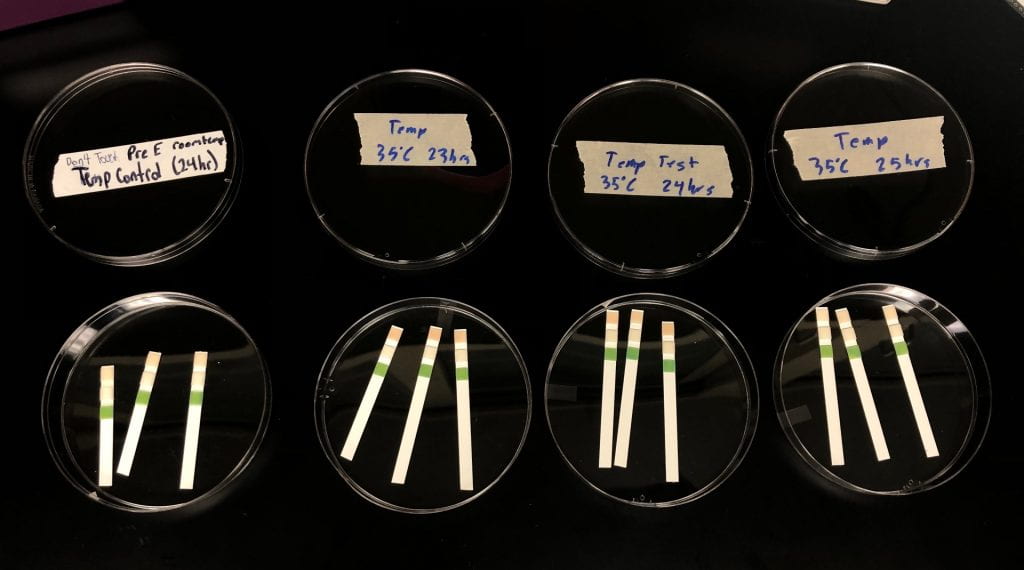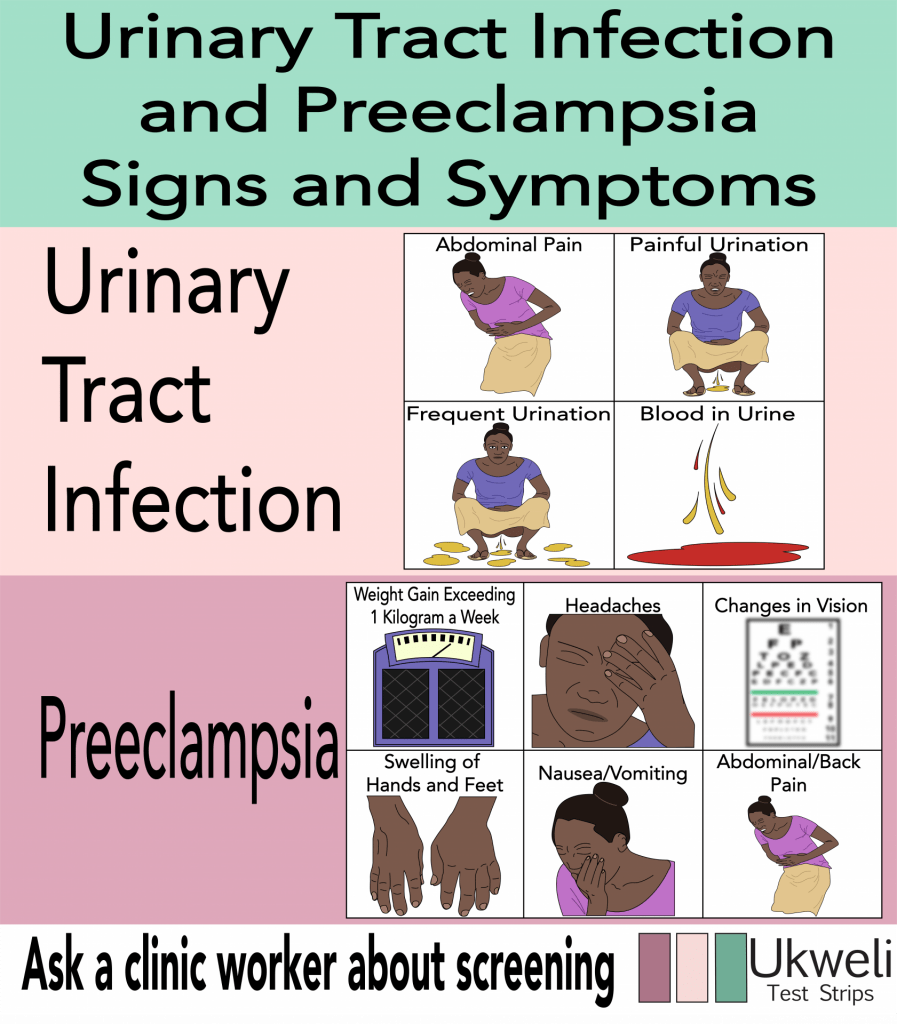These past few days of Mountaintop have been quality control focused for the team, as we were given access to our lab on Monday. Since gaining access to the lab, our team has conducted a few different light exposure tests, and completed one round of temperature exposure tests for the preeclampsia parameter on the test strip.
What we have found is that the preeclampsia parameter fares pretty well when exposed to light compared to the urinary tract infection parameters. We exposed test strips to a light that mimics sunlight for 45, 60, and 75 minutes. Even after 60 minutes, which is when the UTI parameters are impacted according to previous tests, the preeclampsia parameter remained in good condition and correctly identified urine with preeclampsia, as well as correctly identified urine that did not have the proteins that signify preeclampsia.
 Light exposure test for preeclamptic urine: the green bottom parameter signifies a positive screening for preeclampsia
Light exposure test for preeclamptic urine: the green bottom parameter signifies a positive screening for preeclampsia Light exposure test for clean urine: the yellow bottom parameter signifies a negative screening for preeclampsia
Light exposure test for clean urine: the yellow bottom parameter signifies a negative screening for preeclampsia
In addition to the light exposure tests, the test strips fared well with heat exposure. We kept strips in an incubator for 23, 24, and 25 hours at 35 degrees Celsius (95 degrees Fahrenheit), then tested to see if they would still give accurate readings with fake urine that had preeclampsia. We found that even after over a day of high temperature exposure, the strips were still able to give accurate readings for the preeclampsia parameter. More heat exposure testing will be done to determine if the preeclampsia parameter will give false positives after prolonged heat exposure, but the fact that it accurately read contaminated urine is a positive sign.
 Heat exposure test for preeclamptic urine: the green bottom parameter signifies a positive screen for preeclampsia.
Heat exposure test for preeclamptic urine: the green bottom parameter signifies a positive screen for preeclampsia.
Aside from the lab testing, we have continued our crowdfunding efforts. Visuals about each team member and their roles were created, and will be put on the Ukweli website.
In addition, with this week of crowdfunding was focused on reaching out to local healthcare businesses about the possibility of donating to our venture. A script has been written out to be sent to local healthcare businesses such as Orasure, B Braun, and Sanofi, and our team has contacted Lehigh’s Office of Economic Engagement to get in touch with these companies.
Looking forward, next week will be focused on more lab testing and continuing the crowdfunding effort. With our egg incubator coming in, we will be able to conduct humidity exposure tests on our strips, and eventually combine different variables to test the strips quality (heat and humidity, etc). Next week of the crowdfunding plan is focused towards engaging Lehigh alumni in healthcare fields, so more scripts more specific to this group of potential investors will be written up and then sent out to the appropriate people.



